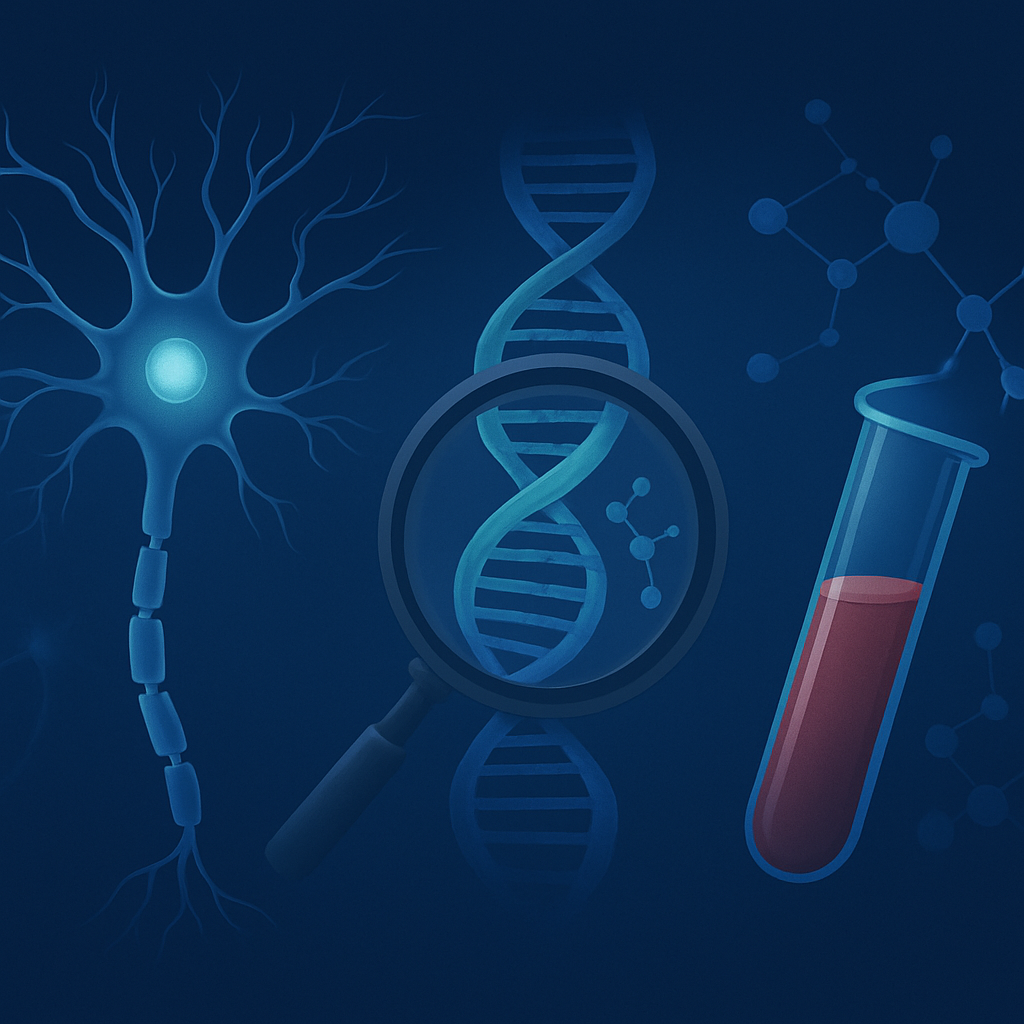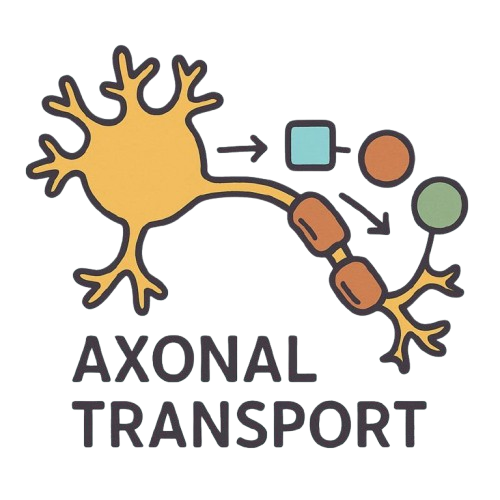The Deep Science: Unveiling the Molecular Landscape of Your Neuropathy
A deeper exploration of the cutting-edge science behind the Ayass Bioscience Neuropathy Test
Understanding the Science
Welcome to a deeper exploration of the science behind the Ayass Bioscience Neuropathy Test. This page details the intricate cellular systems, components, and molecular pathways our advanced analysis investigates. Understanding the activity within these areas via transcriptome analysis is paramount to unraveling the unique biological processes contributing to an individual's neuropathy.
This detailed expansion of Neuron, Schwann, Microglia, Fibroblast, Endothelial, Satellite Glial cell-related transcriptomic markers in PBMCs highlights how changes in these peripheral immune cells reflect the complex pathophysiology of peripheral neuropathy. These cells play pivotal roles in both the development of neuropathic sensory and motor dysfunction and the potential for nerve repair, and their status can be monitored through PBMC transcriptome analysis.
At the heart of our analytical power is the Ayass Bioscience Transcriptome Data Center, where your sample undergoes meticulous processing. The resulting complex data is then interpreted by our Proprietary Agentic AI Platform—an advanced artificial intelligence system developed and owned by Ayass Bioscience.
This synergy of cutting-edge lab work and exclusive AI allows us to provide an unparalleled view into your molecular health.

Explore Key Areas
Our analysis examines gene expression related to several critical areas that are key to understanding neuropathy at a molecular level. Click on any area to learn more:

Axonal Transport Systems
The Neuron's Vital Communication & Supply Lines
Neurons have long axonal processes, requiring efficient transport systems to move essential molecules, organelles (like mitochondria), and signaling components to and from the cell body and axon terminals. Disruptions in axonal transport are a key feature in many neuropathies. Our analysis assesses gene expression patterns related to:
Kinesin Motors
Role: These motor proteins primarily drive anterograde transport (from cell body to axon tip) along microtubule tracks, carrying vital cargo like vesicles and mitochondria.
Neuropathy Insight: Altered expression of kinesin genes can impair the delivery of essential components, leading to axonal dysfunction, energy deficits at nerve endings, and nerve degeneration.
Cytoplasmic Dynein
Role: This motor protein is crucial for retrograde transport (from axon tip back to cell body), returning old materials for recycling and carrying important survival signals.
Neuropathy Insight: Dysfunctional dynein activity can lead to the accumulation of waste products in the axon and a failure to transmit crucial neurotrophic signals, contributing to neuronal stress and damage.
Microtubules
Role: These form the structural "highways" for axonal transport. Their stability and organization are essential.
Neuropathy Insight: Changes in genes responsible for tubulin (the building block of microtubules) or microtubule assembly can compromise the integrity of these transport tracks, severely hindering neuronal function.
Microtubule Stability Regulators
Role: Proteins that modulate the stability and dynamics of microtubules (e.g., MAPs like Tau). A balance between stability and plasticity is vital.
Neuropathy Insight: Imbalances in the expression of these regulators can lead to overly stable or unstable microtubules, both detrimental to efficient axonal transport and nerve health, and are implicated in conditions like chemotherapy-induced neuropathy.
| Component | Description |
|---|---|
| Kinesin Motors | Drive anterograde (cell body → axon terminal) transport of synaptic vesicles and mitochondria (PMC). |
| Cytoplasmic Dynein | Facilitates retrograde (axon terminal → cell body) transport of signaling endosomes and waste (PMC). |
| Microtubules | Polarized "tracks" composed of tubulin dimers, forming the structural basis for transport (PMC). |
| Microtubule Stability Regulators | Proteins (e.g., tau, MAPs) that stabilize or sever microtubules, affecting transport efficiency (PMC). |
Molecular Targets & Neuropathy
Understanding the Broader Context
While the Ayass Bioscience Neuropathy Test identifies your unique patterns of gene expression across these critical systems, it is also informative to see this in the context of known molecular targets and mechanisms studied in neuropathic pain research. Our comprehensive analysis may reveal dysregulation in genes related to:
Voltage-gated Sodium Channels
Key drivers of neuronal excitability.
Calcium Channels
Involved in neurotransmitter release and neuronal sensitization.
Monoamine Reuptake Systems
Important for descending pain modulation pathways.
TRPV1 Receptors
Involved in pain sensation (heat, capsaicin).
Neurostimulation Pathways
Cellular responses to electrical or magnetic modulation.
Muscarinic Acetylcholine Receptors
Play a role in pain processing.
Understanding if genes related to these targets are differentially expressed in your profile can provide valuable insights for discussions with your healthcare provider about the nature of your neuropathy.
| Target/Mechanism | Therapeutic Role |
|---|---|
| Voltage-gated Sodium Channels | Blocked by novel Nav1.8 inhibitors like sulzetrigine to reduce ectopic firing (Chemistry World). |
| Calcium Channels (α2δ Subunits) | Ligands gabapentin and pregabalin bind α2δ, lowering neurotransmitter release (PMC, nypep.nysdoh.suny.edu). |
| Monoamine Reuptake | SNRIs (duloxetine) enhance serotonin/norepinephrine signaling to modulate descending pain inhibition (nypep.nysdoh.suny.edu). |
| TRPV1 Receptors | Targeted by high-dose capsaicin patches (Qutenza) to desensitize nociceptors (Accessdata). |
| Neurostimulation | Spinal-cord and dorsal-root ganglion stimulators deliver electrical pulses to disrupt pain signaling (U.S. Food and Drug Administration). |
| Muscarinic Acetylcholine Receptors | Cholinergic modulation reduces nociceptive transmission in spinal circuits (PMC). |
| Fatty Acid Binding Proteins | Inhibition of FABP5 elevates endocannabinoids, producing analgesia in DRG neurons (PMC). |
| Thermal Nerve Modulation | Cryoneurolysis applies local cold to ablate pain fibers temporarily (PMC). |
The Broader Therapeutic Landscape
Disclaimer: This information is for general educational purposes only. The Ayass Bioscience Neuropathy Test does not recommend specific treatments, nor does it diagnose specific conditions. All treatment decisions must be made in consultation with a qualified healthcare provider who will consider your complete medical history and other diagnostic results.
To provide a full picture, it's useful to be aware of the current approaches to managing neuropathic pain:
FDA-Approved Treatments
- Pregabalin (Lyrica): Binds α2δ subunits of voltage-gated calcium channels; approved for diabetic neuropathy and postherpetic neuralgia.
- Gabapentin (Neurontin): Similar α2δ mechanism; widely used off-label for various neuropathies.
- Duloxetine (Cymbalta): SNRI approved for diabetic peripheral neuropathy and fibromyalgia.
- Capsaicin 8% Patch (Qutenza): High-concentration topical TRPV1 agonist for postherpetic neuralgia and diabetic neuropathy.
- Spinal-Cord Stimulation (SCS): Implantable device delivering electrical impulses to the dorsal columns; indicated for refractory neuropathic pain.
Investigational Therapies
- Cebranopadol: Dual NOP/mu-opioid receptor agonist showing efficacy in diabetic neuropathy in Phase 3 trials.
- Scrambler Therapy: Non-invasive electro-analgesia reprogramming pain signals; multiple late-phase clinical trials underway.
- Stem-Cell Derived Therapies: Autologous skin-fibroblast reprogramming to Schwann-like cells for hereditary neuropathy, in Phase 2/3 trials.
- Closed-Loop SCS (Inceptiv): Senses spinal activity and adapts stimulation in real time; FDA approved in 2024 for chronic pain.
Research is active in areas like selective Nav channel blockers (e.g., Nav1.7, Nav1.8 inhibitors), HCN channel blockers, AAK1 inhibitors, new drug delivery systems, and therapies targeting specific inflammatory or neurotrophic pathways.
Frequently Asked Questions
Find answers to common questions about our Advanced Neuro Transcriptome Analysis
Your Path to Deeper Understanding
The Ayass Bioscience Neuropathy Test, through its comprehensive transcriptome analysis and the unparalleled integrative power of our proprietary Agentic AI Platform at the Ayass Bioscience Transcriptome Data Center, offers a deep dive into the complex molecular symphony (or discord) occurring within your nervous system. By examining these critical cellular components, pathways, and interfaces, we aim to provide you and your healthcare provider with profound insights.
This detailed molecular blueprint can be a valuable tool in understanding the unique nature of your neuropathy, empowering more informed conversations and strategies on your health journey.


